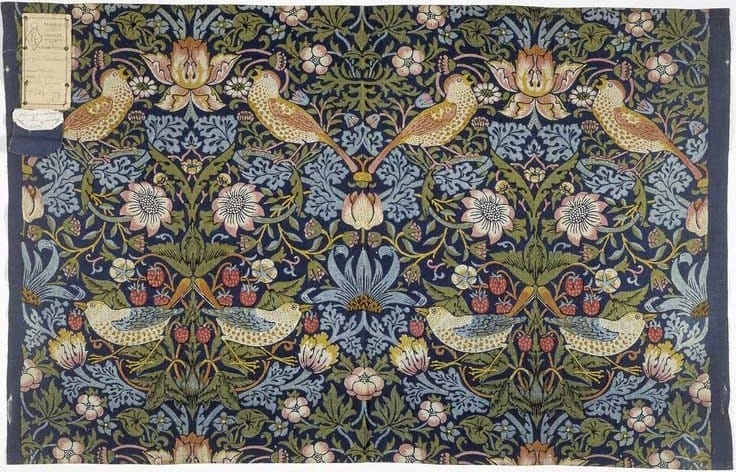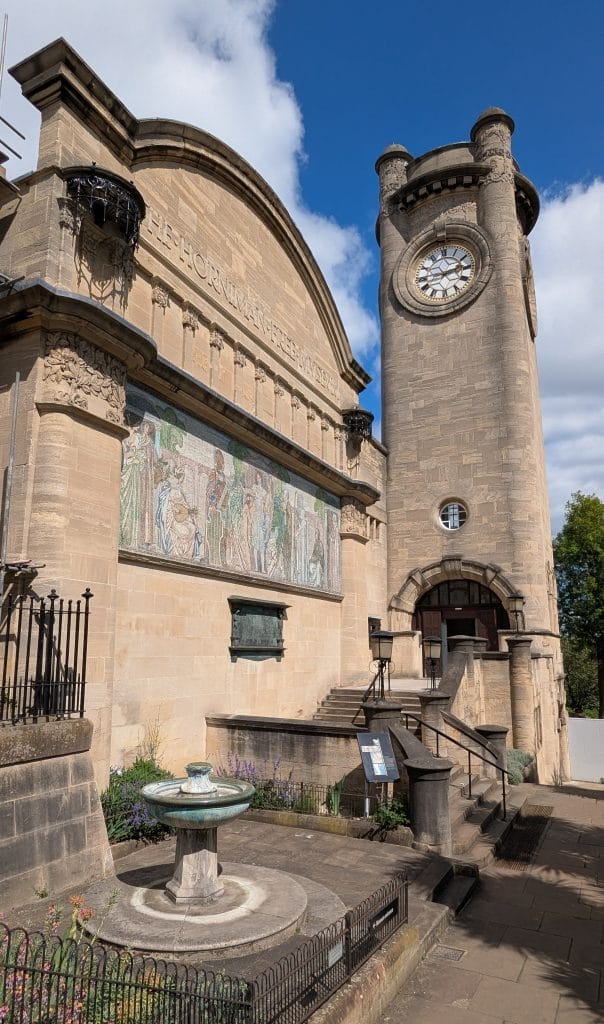The movement was a response to the industrialisation revolution and enhanced mechanisation of the Victorian era. Whilst the growth of industry and factory manufacturing saw mass production of many products, the Arts and Crafts movement favoured small, bespoke craftsmanship.
The proponents of the movement aimed to promote craftsmanship and aesthetic unity between objects in the home.
They wanted to create art that was not just beautiful but that was also useful and could be seen and used regularly. It was more about a set of ideals and beliefs, rather than using a specific style.
Why is it called the Arts and Crafts movement?
The name ‘arts and crafts’ was first used by artist Thomas James Cobden-Sanderson and comes from the Arts and Crafts Exhibition Society. This society was formed in 1887 to exhibit decorative arts alongside fine art.
The Industrial Revolution
The Industrial Revolution took place between 1750 and 1900 and was one of the most transformative periods in British history. This time saw the invention of the steam engine, the growth of the British Empire and the growth of cities across the country.
By the late 19th century the landscape of Britain was transformed.
By 1851 more people lived in cities than in the countryside, and between 1850 and 1900 the average income per head of household doubled.
This industrial boom also meant more jobs and more money for more people. The middle class tripled in size during this time.
Who was in the Arts and Crafts movement?
William Morris is one of the most influential and well-known members of the Arts and Crafts movement.
He was born in 1834 to a wealthy family and was an architect, designer, and practitioner of self-taught crafts.

Portrait of William Morris
William then met artists like Edward Burne-Jones, P. P. Marshall and Charles Faulkner and together they established a firm called Morris, Marshall, Faulkner and Company. This later became Morris and Company but was referred to throughout as ‘the firm’.
Together they created and designed objects including furniture, embroidery, carpets, jewellery, wall hangings and glassware.
There were many interesting and impressive women involved in the movement, from horticulturist and artist Gertrude Jekyll to May Morris who managed the Morris and Co. embroidery when she was 23.
Social conscience
Many of the designers involved in the movement were socialists. A large facet of the Arts and Crafts movement was ensuring that both beautiful and inspiring objects and art were for everyone.
Those involved in the movement believed that its purpose was to ensure that everyday objects had beauty.
‘Fine art is that in which the hand, the head, and the heart of man go together.’
John Ruskin – an architect, critic, writer, and poet among other things – was a large inspiration and intellectual figurehead for the movement. He believed that society would be morally better if arts and design were reimagined alongside the pre-industrial lines.
‘I do not want art for a few any more than education for a few or freedom for a few.’
The movement was also mindful about who it employed, often hiring and training young people homes for destitute boys.
There are also women present throughout the movement, something that could not be said for the art world in general at the time.
The name ‘arts and crafts’ explicitly put crafts – traditionally more female-dominated – on the same level as fine art – which traditionally excluded women.
Despite these ideas, quite revolutionary for their time, the movement was mostly by and for the middle class. The women involved – again, impressive for the time – were normally the family or wives of the men involved in the movement.
Style and Strawberry Thief

Strawberry Thief by William Morris – CC BY-SA 3.0
Much of the style of Arts and Crafts pieces is inspired by the medieval era. It idealised a time where when objects were produced in small-scale workshops.
If you’ve seen a piece of William Morris’s work it is most likely Strawberry Thief, one of the most popular textile designs ever. It depicts thrushes stealing fruit from the kitchen garden of William Morris’s countryside home.
The end of the movement
Like so much else, the First World War completely changed the landscape of art. The horrors of war saw the birth of modernism, and as the main members of the movement got older, they grew increasingly protective of the purity of the movement.
In 1960 the Society merged with the Cambridgeshire Guild of Craftsmen to become the Society of Designer Craftsmen, which still exists today.
Arts and Crafts at the Horniman

The Horniman Clocktower
Our iconic clocktower is adorned with a leaf motif, designed in the Arts and Crafts style by architect Charles Harrison Townsend.
Just as the Arts and Crafts movement promoted art for all, the tree of life design on the then entrance to the Museum signifies that the Museum too is for everyone.


